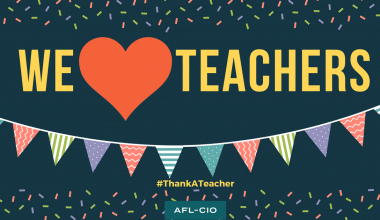You’re not alone if you’re worried about the escalating expense of college tuition and want to know how to pay for college tuition. College funding is a significant concern.
According to College Board, the average cost of college tuition and fees more than doubled between 1990-91 and 2020-21 school years at public four-year, public two-year, and private nonprofit four-year colleges – and that’s after inflation.
Each person’s financial condition is unique. College is a significant financial investment for you and your family. Acceptance into your preferred school is a cause for happiness, so don’t let the cost put you off.
When it comes to figuring out how to pay for college, there are a plethora of tools available to assist you in developing a financial plan that works for you and your family while also assisting you in paying for college.
The majority of students are eligible for some type of financial aid. There are loans, grants, and scholarships available to assist you reach your goals, whether you come from a military family, have excellent grades, or demonstrate financial need.
To get a better idea of your options, Here are some tips to guide you on how to pay for college tuition.
Paying For College Tuition
Last year, the sticker price for tuition, housing, and board at the average private institution was $45,370. However, according to The College Board, the average student paid $26,080. The sticker price for public universities was $20,090, but the average in-state student spent $14,210.
Even if you don’t qualify for a scholarship, there are a variety of additional options available to assist you cover the costs. Don’t feel guilty if you’re a little confused about how the financial aid system works.
Scholarships and grants (which you don’t have to pay back) are available, as well as loans. Some of what you get is based on your money, while others are based on academic achievement.
Now that you know how to pay the tuition, read about Salt Lake Community College Tuition: Scholarship, Acceptance Rate & Cost of Living in 2024
How To Pay For College Tuition?
1. File for Free Application for Federal Student Aid (FAFSA).
The first option to how to pay for college tuition, although the Free Application for Federal Student Aid (FAFSA) appears frightening, it should not deter students.
Students can apply for federal help as well as some state and institutional aid via the FAFSA.
For example, low-income students may be eligible for the Federal Pell Grant, which will provide up to $6,495 for the 2024-22 academic year.
Some families wrongly assume that filing the FAFSA will require them to borrow money, or that they earn too much money to qualify for financial aid, or that completing the FAFSA will take hours.
The FAFSA takes the majority of folks less than half an hour to complete. There’s also an app version of the FAFSA that makes submitting it a breeze.
It’s also worth noting that, while completing the FAFSA is a requirement for receiving low-cost federal student loans, people who do so are not obligated to take the aid that is offered.
Even rich families may qualify for financial help at high-cost universities since financial need is determined by the difference between college costs and the expected family contribution (EFC).
2. Apply for a scholarship application
Another guide for how to pay for college tuition is scholarships. Scholarships are one of the finest methods to acquire financial aid for college because you don’t have to repay them in most cases.
Begin by looking for scholarships offered by your institution, then use scholarship search engines such as Scholarships.com and Fastweb to uncover possibilities that you are eligible for.
Early application for scholarships can be advantageous, especially because some scholarship programs have a restriction on the number of applicants they would accept. It’s possible that if you wait too long to apply, your application will be rejected.
The sooner you start the scholarship application process, the more options you’ll have for paying for college when other financial resources are insufficient, and the less likely you’ll have to rely on loans.
3. Begin saving early.
Another answer to how to pay for college tuition is to save money early. The golden rule of college finance still holds true: start saving as soon as possible to take advantage of compound interest.
According to a college savings calculator, parents who begin investing $200 per month when their child is born will have approximately $76,500 in their account by the time their child turns 18, assuming a 6% annual return.
Parents who start saving when their child is 10 years old, on the other hand, will only accumulate $24,500 at the same rate of return.
Your most valuable possession is time. If you start saving from birth, wages will cover roughly a third of your college savings target.
If you wait until your child starts high school, wages will account for less than 10% of your income, and you’ll have to save six times as much per month to achieve the same college savings target.”
You need to begin saving early for Bloomfield tuition. Find out how much it is here. Bloomfield College Tuition: Scholarships and Costs of Living 2024
4. Make payments a top priority.
The government financial assistance formula takes into account assets such as stocks, mutual funds, certificates of deposit, and rental properties owned by your family, but it excludes some investment vehicles such as retirement plans, life insurance policies, and equity in your family’s primary property.
Parents who store assets in places that aren’t included on the FAFSA may, but aren’t always, eligible for greater financial aid. This covers unsecured debt such as personal loans and credit cards, as well as an auto loan. This is another way to know how to pay for college tuition.
5. Get the assistance of family members.
College costs do not have to be borne solely by parents and students. Grandparents and other relatives can contribute to a student’s 529 plan, and those who give a lot get rewarded.
Individuals can make financial gifts to a 529 plan worth up to $15,000 per beneficiary each year without having to report the gift to the IRS.
All 529 plans have an additional stipulation that permits donors to make a one-time financial gift of up to five years’ worth of assets, for a total of $75,000, without incurring gift taxes, as long as the total value of the donation averages out to $15,000 per year.
If a family member is thinking about doing this, advise them to consult a tax professional to ensure that everything is done appropriately. This is another way to know how to pay for college tuition.
6. Examine 529 plans.
Another answer to know how to pay for college tuition is 529 plan. You can put money aside for approved school costs with a 529 college savings plan. Contributions grow tax-free and can be withdrawn tax-free as long as they are used for approved expenses.
Fees, investment options, tax incentives, and rates of return vary widely among 529 college savings programs. While some states provide large state tax deductions, others provide few or no such benefits.
When comparing plans, look into 529 plan ratings from groups like Morningstar, look into your home state’s 529 programs first to see what state tax incentives you could be qualified for, and keep in mind that you can invest in any state’s 529 plan, not just the one where you live.
Consider using another state’s plan instead of your own if your state doesn’t give tax benefits and you can get more investment selections and lower fees there.
7. Pick a school that is within your budget.
This is one of the best answers on how to pay for college tuition. The Choosing a school that is reasonably priced for you can make paying for college much easier. Consider enrolling in a community college or technical school to avoid putting a strain on your finances.
If you want to attend a traditional four-year university, search for one that offers a lot of financial help.
Concentrate on each school’s net price, or the cost to you after grants and subsidies. Use the net price calculator at each institution to assess how much you’ll have to spend out of pocket or borrow.
According to Phil Trout, a college counselor at Minnetonka High School in Minnetonka, Minnesota, and former president of the National Association for College Admission Counseling, just because a school’s sticker price is lower doesn’t mean it will be more affordable for you.
For example, if a $28,000-a-year school doesn’t offer you any financial help and a $60,000-a-year school does, the $60,000-a-year school is actually more cheap for you.
8. Take out federal student loans
This is another way to know how to pay for college tuition. Consider taking out federal student loans if you’ve exhausted all other possibilities for financing your education.
Federal student loans are relatively cheap, especially for undergraduates. If you’re a student with financial need, you might be eligible for subsidized loans, which cover the interest on your loan while you’re in school and during future deferment periods.
All you have to do to apply for federal loans is complete out the FAFSA. There is no credit check for most loans, and you will be charged the same interest rate as everyone else who qualifies for the program.
You can determine how much you want to borrow based on the amount of financial aid you’ve been granted when you receive your financial aid award letter.
Federal student loans are usually the first choice for students who need money for college because they come with advantages that private student loans do not.
They provide a variety of deferment and forbearance options, as well as the chance to have a portion of your debt forgiven through income-driven repayment programs or Public Service Loan Forgiveness.
Do you need loan forgiveness from Springfield? Learn about their scholarships. Springfield College Tuition: Scholarships and Cost of Living in 2024
9. Take out private student loans
Another option for how to pay for college is to take out private student loans. Even when compared to federal student loans, they are generally regarded as a last resort option.
Because private loans often require a credit check to be accepted, qualifying as a college student with little or no credit history might be difficult.
Even if you are authorized, your interest rate is determined by your creditworthiness, which means your loans may be costly.
Most lenders, however, allow co-signers, which can help you qualify for a loan and earn a cheap interest rate. This, however, implies that the loans will appear on the co-credit signer’s report, making it more difficult for them to obtain credit in the future.
Even so, if you’ve used up your federal student loan allocation, which is capped on an annual and aggregate basis, private student loans might be a much better option than higher-interest credit cards and personal loans.
10. Request funds from the college.
Yes, you have the right to argue about financial help. Experts recommend that the student prepare a formal appeal letter and then contact to follow up.
It’s crucial reiterating why you’re a good fit for the school and whether or not a comparable college offered you greater financial help.
Perhaps you could explain your financial status more clearly. Other expenses, such as medical bills, may arise that have not yet been factored into your budget.
Because the FAFSA is based on your income from the previous year, it’s also a good idea to remark if your family’s financial circumstances have altered in the preceding year. This is another answer on how to pay for college tuition.
11. Work-study jobs
These are part-time jobs on or near campus for eligible students, based on their financial situation and the school’s funding. To be eligible, you must have completed the FAFSA.
Students are paid directly by work-study jobs at least once a month. Undergraduates are paid hourly, although their earnings cannot exceed their work-study award for the year. The amount should also be stated in the school’s financial aid award letter.
If you are not eligible for work-study, you may choose to hunt for another part-time job.
College students can find odd jobs like babysitting, tutoring, and dog walking on websites like QuadJobs and WayUp, as well as work connected to their academics. This is another answer on how to pay for college tuition.
12. Attend community college or live off campus.
This is one of the best answers on how to pay for college tuition. It is possible to save a lot of money by commuting to school while living at home.
The average cost of room and board at public colleges is $10,440 per year, while private colleges charge $11,890 per year. At some colleges, this can be comparable to the cost of tuition.
If your finances are truly tight, consider enrolling in a community college first and then transferring to a four-year institution later. Last year, the average community college tuition and fees totaled $3,520.
13. Grants
Grants, similar to scholarships, are not repaid. They could be in the form of institutional private grants, state funding, or federal monies like the Pell Grant. For undergraduate students, the Pell Grant is the largest government grant program.
It is given to students who demonstrate financial need in order to assist them in paying for college, and the amount varies based on whether you are a full-time or part-time student, the cost of your school, and the length of your studies.
This is another answer on how to pay for college tuition.
Welch college has some grants and scholarships. Learn about them here. Welch College Tuition: Scholarships and Cost of Living in 2024
Dealing With Student Loan Debt After College
If you have a federal student loan, you may be eligible for programs such as Public Service Loan Forgiveness, which forgives your outstanding balance after 120 consecutive payments, or income-driven repayment plans, which reduce the amount you have to pay each month.
Borrowers with private loans may choose to refinance their loans after graduation in order to obtain a lower interest rate or better repayment terms that meet their circumstances.
If you find a particularly low interest rate on a private loan, you can refinance your federal loans into it, but you’ll forfeit the benefits of the government program.
The idea is to make a plan for your student loans that is based on your objectives and financial constraints. You might be able to pay off your debt early, save money on interest, and even have some or all of it forgiven if you use the appropriate plan.
FAQs
1.Fill out the FAFSA (Free Application for Federal Student Aid).
2.Look for scholarship opportunities.
3.Find a school that is within your budget.
4.Apply for grants if you qualify.
5.Apply for a work-study position.
6.Take use of your savings.
You pay your student’s college cost in monthly installments rather than paying it all at once for a semester or quarter. The first payment is frequently larger than the subsequent ones. By the end of that academic period, you must have paid your complete bill.
How do you pay for college, if you’re poor
Here are seven options for paying for college on a shoestring budget:
1.Submit a scholarship application.
2.Submit an application for financial help and grants.
3.Talk to the college about getting extra financial aid.
4.Apply for a work-study position.
5.Cut your spending.
According to the College Board, state college tuition rates for 2018-19 are an average of US$10,230 for residents of the state and $26,290 for everyone else. In comparison, private non-profit institutions charge an average of $35,830 per year.
Grants, similar to scholarships, are not repaid. They could be in the form of institutional private grants, state funding, or federal monies like the Pell Grant. For undergraduate students, the Pell Grant is the largest government grant program.
Conclusion
Every family will have a different approach to figuring out how to pay for college tuition. However, all students should think about the broader picture and have a realistic awareness of the expenditures and ROI.
Today, you need a strategy that includes not only preparing and completing the FAFSA, but also evaluating the value you’re receiving from the institution you chose.




